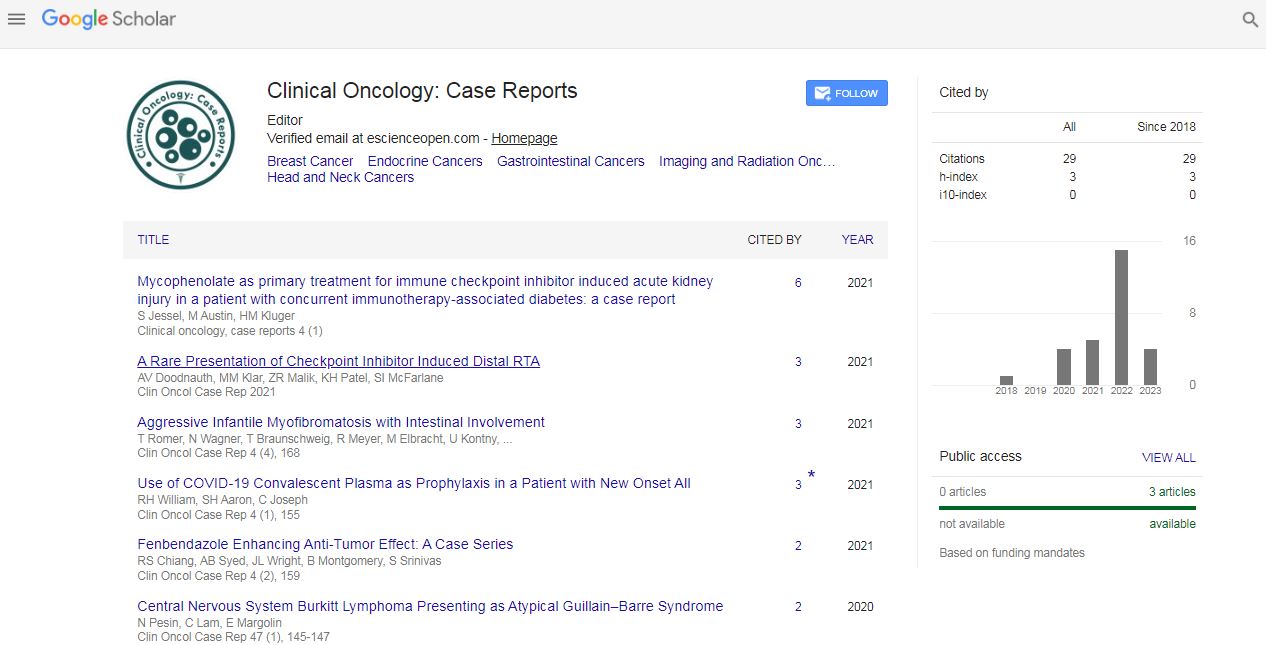Case Report, Clin Oncol Case Rep Vol: 3 Issue: 4
Angioleiomyoma in the Facies Inferior Linguae: A Rare Case and a Literature Review
Koroku Kato*, Atsushi Honbo, Hiroki Miyazawa, Natsuyo Noguchi, Kazuhiro Ooi and Shuichi Kawashiri
Department of Oral and Maxillofacial Surgery, Kanazawa University Graduate School of Medical Science, Kanazawa, Japan
*Corresponding Author : Dr. Koroku Kato
Department of Oral and Maxillofacial Surgery, Kanazawa University Graduate School of Medical Science, 13-1 Takaramachi, Kanazawa, 920-8641, Japan
Tel: +81-76-265-2444
E-mail: k-koroku@oral.m.kanazawa-u.ac.jp
Received: May 14, 2020 Accepted: May 29, 2020 Published: June 12, 2020
Citation: Kato K, Honbo A, Miyazawa H, Noguchi N, Ooi K, et al. (2020) Angioleiomyoma in the Facies Inferior Linguae: A Rare Case and a Literature Review. Clin Oncol Case Rep 3:4.
Abstract
Angioleiomyoma rarely occurs in the oral cavity, and it is extremely rare for this tumor to occur in the facies inferior linguae. We describe an exceptional angioleiomyoma that presented in the right facies inferior linguae in an obese 51-year-old female with hepatopathy. MRI showed high signal on T2-weighted image and the clear visualization of muscle and iso-signal on T1-weighted image. We excised the tumor under general anaesthesia as the clinical diagnosis of benign tongue tumor. The tumor was covered with a capsule, and the split surface was yellowish white. Hematoxylin-eosin staining revealed that the wide, spindle-shaped cells with eosinophilic cytoplasm had a bundle-like and complex array, and slit-like blood vessels with branching were scattered. The smooth muscle of the blood vessel wall was observed to have grown. Immunohistochemical staining was positive for αSMA, HHF-35 and caldesmon, somewhat positive for desmin, and negative for CD31, CD34, S100 and Ki-67. The tumor was finally diagnosed as angioleiomyoma. We review the literature’s case reports of angioleiomyoma of the tongue. Chronic estrogen metabolism abnormality due to liver dysfunction may have been the cause of this tumor. This case suggests that MRI imaging and immunohistochemical analysis are useful for the diagnosis of this tumor.
 Spanish
Spanish  Chinese
Chinese  Russian
Russian  German
German  French
French  Japanese
Japanese  Portuguese
Portuguese  Hindi
Hindi 